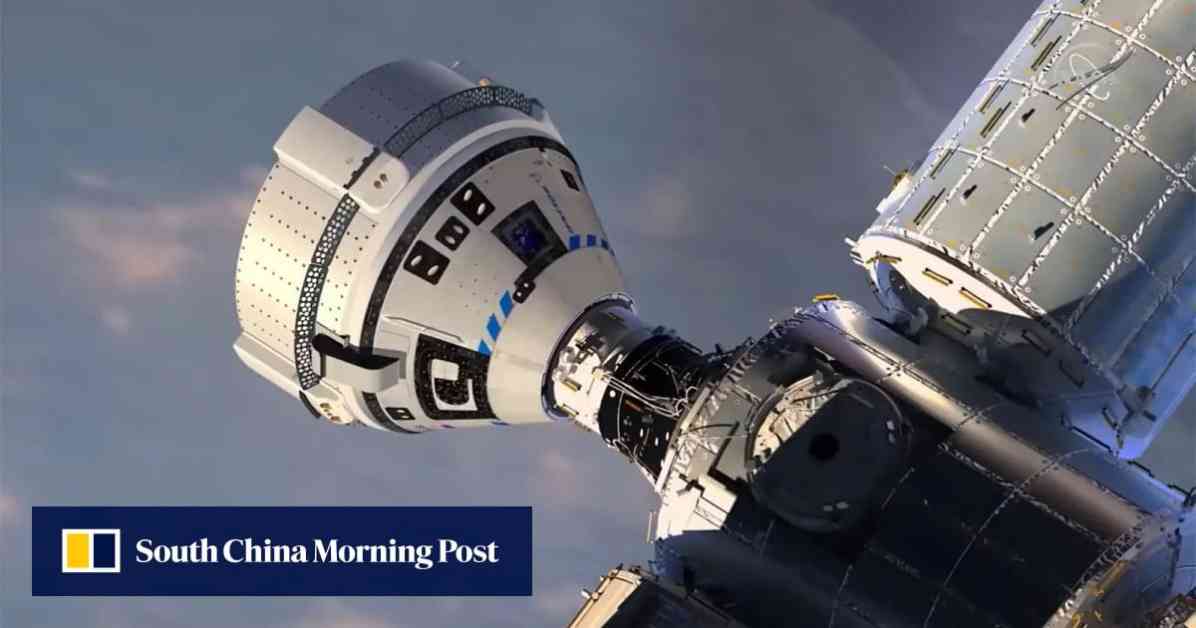SpaceX to Bring Boeing Starliner Astronauts Home in 2023, NASA Confirms
In a significant development for the space industry, NASA has confirmed that two astronauts who flew to the International Space Station (ISS) in June aboard Boeing’s Starliner capsule will need to return to Earth on a SpaceX vehicle in early 2023. This decision comes after issues with Starliner’s propulsion system were deemed too risky to carry its first crew home. NASA Chief Bill Nelson announced this decision on Saturday, marking a pivotal moment for both Boeing and SpaceX in the realm of space travel.
Background on Boeing’s Starliner Program
Boeing’s Starliner program has faced numerous challenges and setbacks since its inception. The company had hoped that the test mission with veteran NASA astronauts Butch Wilmore and Suni Williams would help redeem the troubled program. However, issues with the propulsion system plagued the mission from the start, with five of the 28 thrusters failing and multiple helium leaks occurring during the journey to the ISS.
Despite years of development problems and over $1.6 billion in budget overruns, Boeing was optimistic about the potential success of the Starliner program. The June mission was a critical test for the capsule to demonstrate its capabilities and secure certification for future crewed flights. However, the propulsion system failures and other technical issues have raised serious concerns about the safety and reliability of the spacecraft.
NASA’s Decision to Use SpaceX for Astronaut Return
In a rare move, NASA has chosen to rely on SpaceX to bring the astronauts back to Earth. This decision underscores the agency’s confidence in SpaceX’s Crew Dragon spacecraft and its track record of successful missions. The Crew Dragon is scheduled to launch next month as part of a routine astronaut rotation mission, with two seats being reserved for Wilmore and Williams for their return in February 2023.
Boeing’s Response to NASA’s Decision
Boeing’s Starliner chief, Mark Nappi, expressed disappointment in NASA’s decision but emphasized the company’s commitment to ensuring the safety of the crew and spacecraft. The focus now shifts to resolving the technical issues with Starliner and preparing for future missions. Boeing’s new CEO, Kelly Ortberg, has pledged to continue working on the problems with Starliner and to address any concerns raised by NASA.
The Challenges Faced by Boeing and the Starliner Program
Boeing’s struggles with the Starliner program come at a challenging time for the company, as it also grapples with quality issues in the production of commercial planes. The pressure to deliver a reliable and safe spacecraft for NASA’s crewed missions has put a spotlight on Boeing’s engineering and manufacturing capabilities. The company must now work diligently to address the technical issues with Starliner and regain the trust of NASA and the broader space community.
The Path Forward for Boeing and Starliner
As Starliner prepares to undock from the ISS and return to Earth autonomously, Boeing faces a critical juncture in the development of the spacecraft. The company must conduct thorough investigations into the propulsion system failures and helium leaks to ensure that similar issues do not occur in future missions. The data gathered from testing and simulations will be crucial in identifying the root causes of the technical problems and implementing effective solutions.
The Future of Crewed Space Missions
NASA’s decision to rely on SpaceX for the return of the astronauts highlights the changing landscape of crewed space missions. With multiple commercial providers now offering transportation services to the ISS, NASA has more options for sending astronauts to and from space. This diversity in spacecraft capabilities and technologies enhances the resilience and flexibility of the agency’s human spaceflight program.
Subheadings:
Challenges Faced by Boeing’s Starliner ProgramBoeing’s Response to NASA’s DecisionThe Future of Crewed Space Missions
The Future of Crewed Space Missions
In conclusion, NASA’s decision to have SpaceX bring the Boeing Starliner astronauts home in 2023 marks a significant moment in the history of space exploration. The challenges faced by Boeing with the Starliner program underscore the complexities and risks involved in developing and operating crewed spacecraft. As NASA and its commercial partners continue to push the boundaries of human spaceflight, the lessons learned from these experiences will shape the future of space exploration for generations to come.



















